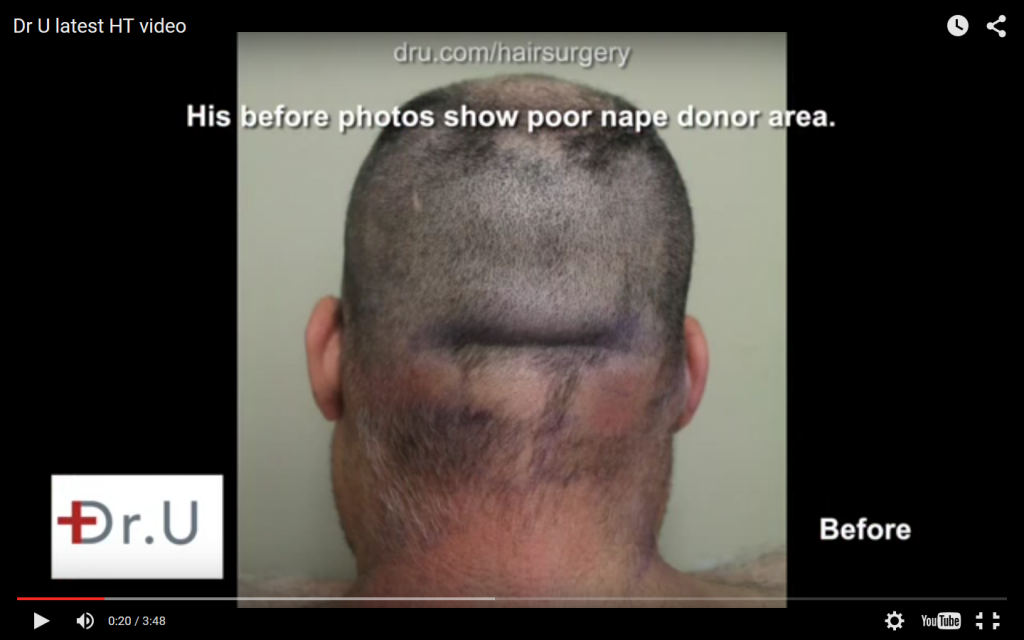What is the number of FUE hair transplants needed over a lifetime
There are several variables that can influence this
(1) Need for Repairing Mistakes Due to Poor Execution
The results of FUE surgery will depend on the skills, expertise and experience of the doctor who performs the procedure. There are many examples of patients (including those who underwent strip surgery) who ended up with little to no growth, or badly placed grafts. Transient yield or continued baldness and thinning may result from selecting the wrong follicles which had already started to miniaturize. They may produce some hair in the recipient area. But these results will not last. Lack of growth could also be due to errors in handling the follicles which caused them to become injured. Hair may have been inserted at the wrong angles or directions. Or their results may have included an ill-fitting facial frame, consisting of the hairline and temple points. With these types of outcomes, you might want to consider a hair transplant repair in order to achieve your desired appearance.
(2) Continued Shedding Of Your Native Hair
Once the harvested grafts are inserted, they are permanently embedded in the scalp. In fact, it has been determined that it only takes nine days before the recipient slits completely close above the follicles. After this point, they will not fall out. Therefore when hair restoration results seem to decline, it is not because the grafts have somehow become dislodged. Outside the transplanted region, the patient’s natural hair will most likely continue to shed. Therefore, depleted and bald areas may continue with progressive hair loss. And additional transplantation surgery with FUE may be needed to harvest more grafts (either from the scalp or the body) to fill in these areas.
Prevention and Maintenance to Reduce the Number of FUE Hair Transplants Needed Over a Lifetime
After a hair restoration procedure, the doctor may recommend the use of Rogaine or even Propecia to help maintain the results. Rogaine increases the supply of blood and oxygen to the hair follicles which fortifies them and the processes they use to produce new shafts. Prescription drugs such as ketoconazole shampoo and topical tretinoin may also be recommended by physicians to enhance the performance of these FDA approved medications. While these measures can help maintain the results of one’s hair transplant, they may or may not entirely prevent the need for additional FUE hair transplant procedures. Again this would depend on the nature of each patient’s case.
Obtaining More Donor Grafts For Future Follicular Unit Extraction Operations
Subsequent surgeries will obviously depend on having enough donor follicles to repair the targeted areas. If not enough grafts are available on the scalp, a secondary option to consider would be the use of follicles from the body. Extracting these alternate hair structures would require specialized Advanced FUE instruments such as uGraft. This helps ensure that they can be safely removed without injury. Grafts from the head can also be inserted along with the body hair to create a more even looking texture.

